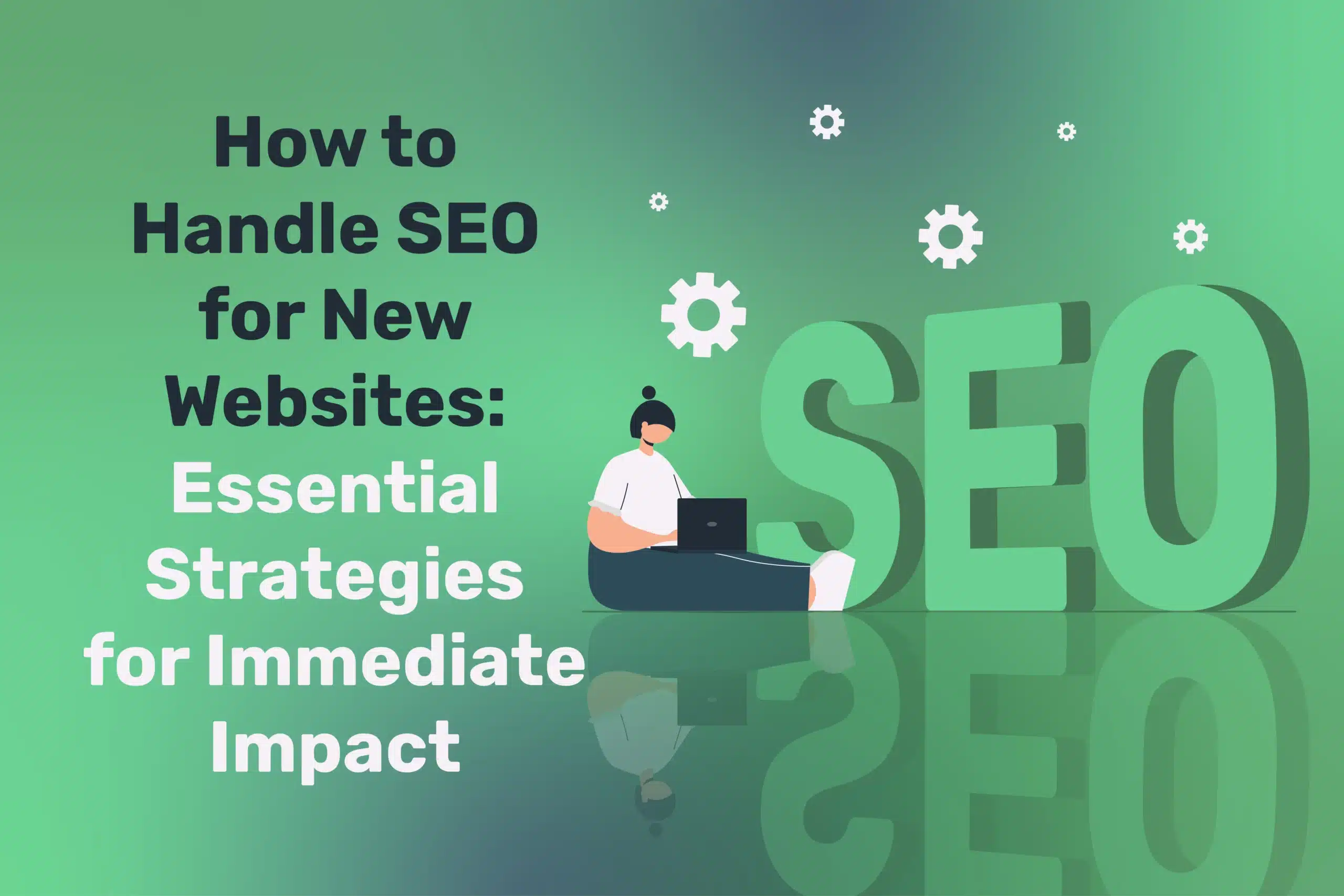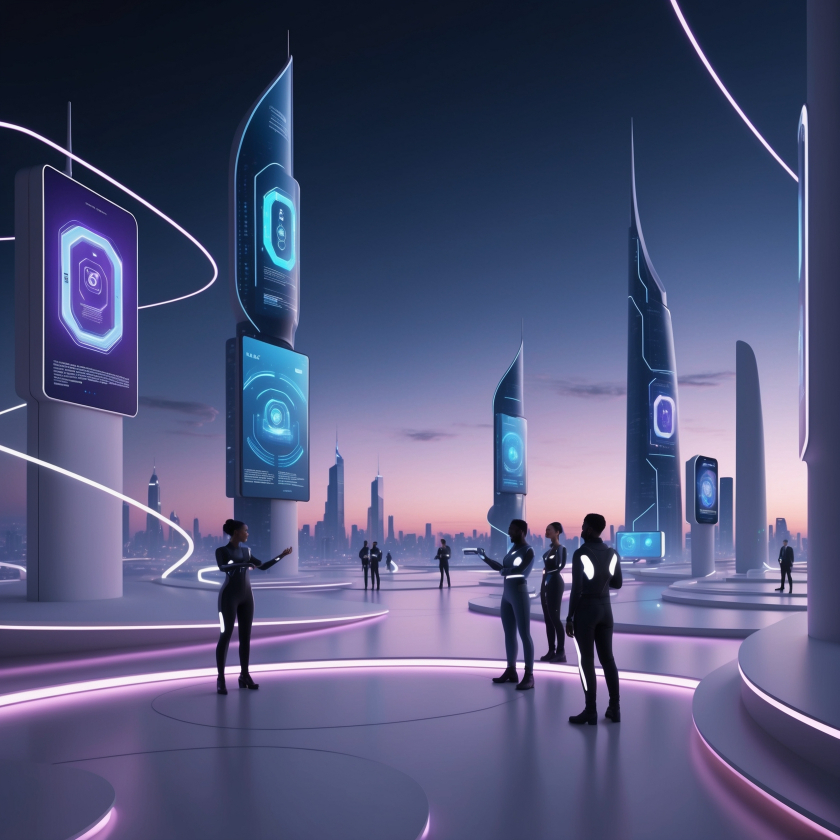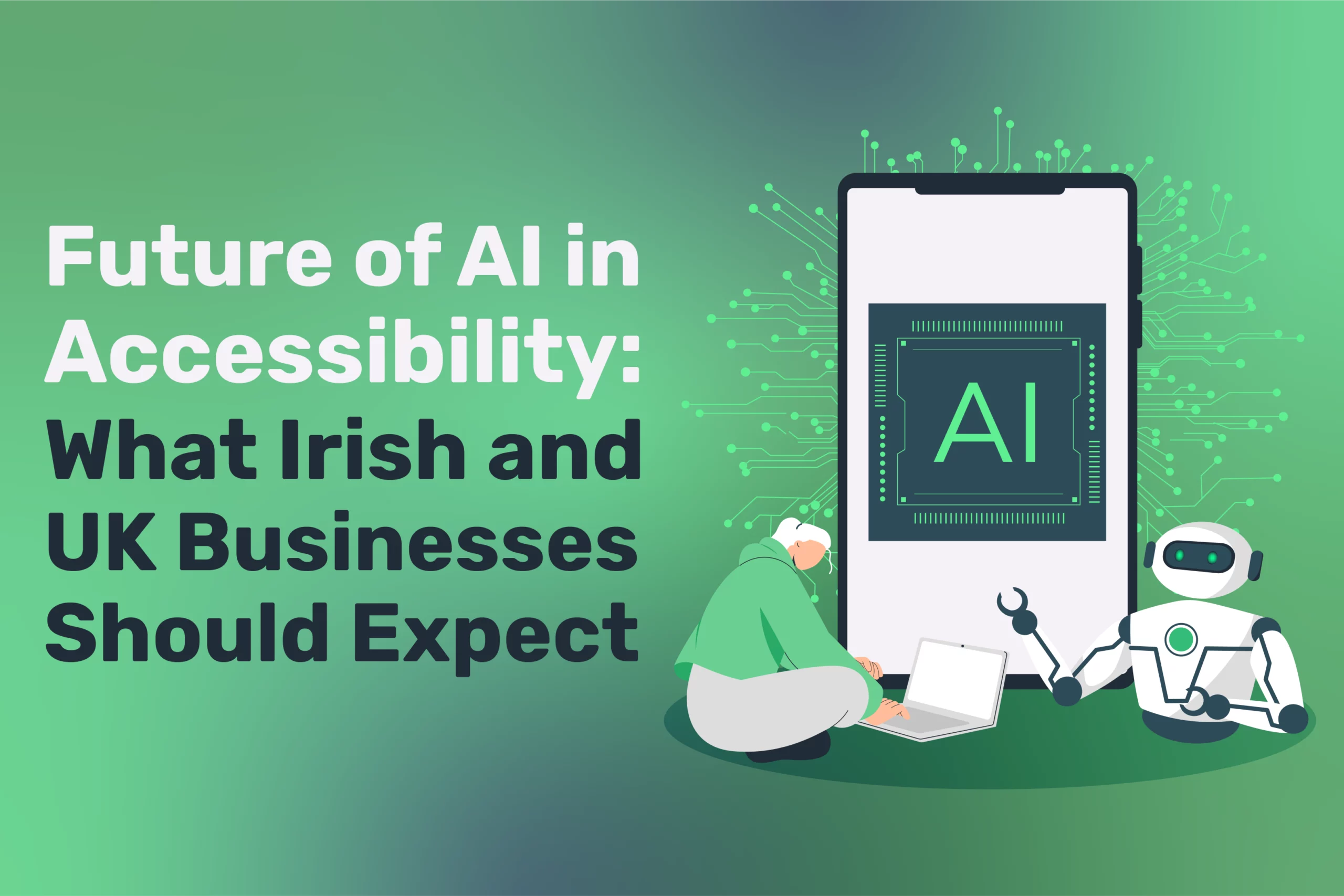
Future-Focused Digital Experiences: AI, AR, Voice Search & Omnichannel
Table of Contents
Digital transformation strategies are evolving at breakneck speed, with customer expectations frequently surpassing many brands’ abilities to adapt. In Northern Ireland, Ireland, and across the UK, staying ahead of emerging trends in digital design isn’t just beneficial—it’s mission-critical. From immersive augmented reality (AR) solutions to zero-click search experiences, new technology and design shifts are redefining how people discover, engage with, and stay loyal to businesses.
Below, we explore seven essential trends shaping future-focused digital experiences. We’ll also outline practical steps for integrating these innovations into your organisation—ensuring you deliver interactive user experiences and sustainable web design best practices that resonate with today’s audiences.
Voice-First Interaction & Local Search
Voice technology is transforming how customers interact with digital content.
- Smart Speaker Proliferation: Over 45% of UK households now own smart speakers, with strong adoption rates in Northern Ireland and Ireland.
- Mobile Voice Assistance: Voice queries on smartphones are mainstream for on-the-go searches.
- Conversational Keyword Focus: Users now pose questions verbally rather than typing short keywords.
- Local Search Importance: Many voice searches feature “near me” requests, fundamental for regional businesses.
According to Think with Google, voice search usage continues to rise daily, making optimised metadata and conversational phrasing essential for discovery. Remember to integrate structured data markup (schema.org) and FAQ content to rank higher in voice results.
Zero-Click Search Results
Search engines increasingly deliver direct answers on results pages, reducing clicks and driving immediate user satisfaction.
- Featured Snippets: Concise answers above organic results.
- Knowledge Panels: Central details without requiring an extra click.
- Local Packs: Map-based listings showcasing key business info.
- People Also Ask: Expandable questions delivering further context.
Pro Tip: Optimise for zero-click by creating concise, authoritative content that clearly addresses user questions. This boosts visibility and captures attention even if the user doesn’t click through.
Immersive XR (Extended Reality): AR & VR for Deeper Engagement

Immersive technologies like AR (Augmented Reality) and VR (Virtual Reality) are no longer futuristic novelties—they’re quickly becoming mainstream tools for enhancing product visualisation and user engagement. By overlaying digital information onto physical environments (AR) or creating fully immersive virtual worlds (VR), businesses across Northern Ireland, Ireland, and the UK can captivate customers with interactive experiences that drive brand loyalty and boost sales. These cutting-edge solutions have opened the door to everything from virtual showrooms and training simulations to immersive marketing campaigns, offering clear opportunities for differentiation in both local and global markets.
Augmented Reality (AR) Integration
AR has matured from novelty to practical business application, enhancing interactive user experiences:
- Product Visualisation: Let customers preview furniture, décor, or clothing at home.
- Location Enhancement: Layer digital info onto physical environments for retail or training.
- Virtual Try-On: Enable users to test cosmetics or eyewear virtually.
- Educational Experiences: Offer immersive learning tools around your products or services.
Virtual Reality (VR) Applications
VR introduces fully immersive scenarios:
- Virtual Showrooms: Exhibiting products or properties in a digital 3D environment.
- Event Previews: Virtual tours of venues before booking.
- Training Simulations: Realistic practice environments for staff or customers.
Regional Application Example: A Belfast-based property developer uses VR so potential buyers experience new housing developments before construction finishes. This approach reduces on-site visits and showcases properties in high fidelity—important for Northern Ireland’s mixed urban-rural demographic.
Hyper-Personalisation with Advanced AI
Hyper-personalisation represents a significant shift towards delivering uniquely tailored digital experiences for each user. By integrating advanced AI algorithms with detailed behavioural and contextual data, businesses can anticipate customer needs in real time and provide content, products, or services that resonate on an individual level. In Northern Ireland, Ireland, and the UK, where competition is fierce and customer expectations continue to rise, harnessing AI-driven personalisation can become a decisive factor in fostering loyalty and long-term brand growth.
Beyond Basic Personalisation
AI-driven personalisation extends far beyond greeting a user by name. It can:
- Predictive Personalisation: Anticipate customer needs from behavioural patterns.
- Real-Time Adaptation: Adjust content during the same session based on user interactions.
- Segment-of-One Marketing: Craft unique experiences for individual users.
Data-driven Insights for Personalisation
Gather data from multiple sources to refine hyper-personalisation:
- Behavioral Analytics: Track user interactions and preferences.
- Contextual Clues: Factor in location, device type, and time of day.
- Feedback Integration: Incorporate explicit user feedback to refine personalisation rules.
Ethical Frameworks & Privacy
UK consumers are increasingly mindful of data usage. Adhere to GDPR and respect preferences:
- Transparency: Clearly state how data is collected and used.
- Control Mechanisms: Provide easy opt-out or personalisation customisation.
- Data Minimisation: Collect only what’s necessary for enhanced user value.
Ethical & Sustainable Digital Design: Building Trust and Loyalty

With growing consumer awareness around the environmental footprint of digital services—and increasing scrutiny on privacy and ethical data practices—businesses must prioritise design choices that foster trust. Ethical and sustainable digital design goes beyond meeting minimal regulatory requirements; it’s about building authentic relationships with users who appreciate transparency, accessibility, and responsible resource usage. By aligning with these values, brands across Northern Ireland, Ireland, and the UK can elevate their reputations, forge deeper connections, and ultimately drive greater loyalty among conscientious customers.
Growing Consumer Consciousness
Customers want more than cool features; they want brands to align with their values:
- Data Ethics Sensitivity: Users want brands to safeguard personal information.
- Inclusivity Expectations: Accessibility for all backgrounds and abilities is now standard.
- Value Alignment: Audiences increasingly choose businesses matching their ethical, environmental, and social outlook.
Sustainable Web Design Best Practices
Strive to reduce environmental footprints and boost longevity:
- Performance Optimization: Faster load times cut server usage (and user frustration).
- Energy-Efficient Hosting: Opt for green hosting solutions.
- Inclusive Representation: Use imagery and copy reflecting diverse communities.
Regional Note: Northern Ireland businesses can highlight their local focus and commitments to ethical practices. This fosters community goodwill and helps smaller businesses compete against larger, global competitors.
Micro-Interactions & Microcopy: High-Impact User Engagement
Micro-interactions and microcopy are the small but powerful touches that can transform your digital interfaces from purely functional to truly engaging. By providing subtle feedback, guiding decision-making, and reinforcing brand personality, these tiny elements can make a massive difference in user satisfaction. Implemented effectively, micro-interactions and microcopy energise an interface, keep users focused, and convey a sense of consistency and care—crucial gains for businesses in Northern Ireland, Ireland, and the UK looking to stand out in a crowded digital landscape.
The Power of Small Details
Subtle elements can transform user experiences:
- Interactive Feedback: Animations signalling clicked buttons or completed actions.
- Hover Effects: Visual highlights to guide cursor movement.
- Loading Indicators: Creative placeholders maintain engagement as pages load.
Effective Microcopy
Brief text elements that guide and delight the user:
- Button Text: Action-oriented prompts (e.g., “Get My Free Quote”).
- Form Labels: Clear instructions for data entry.
- Error Messages: Friendly, supportive language when something goes wrong.
- Tool Tips: Contextual hints that appear at just the right moment.
Pro Tip: Keep your microcopy on-brand. If your tone is warm and approachable, ensure these small text elements reflect that same personality. British users often respond well to subtle wit, while Northern Ireland audiences appreciate a gentle regional voice.
AI-Assisted Creative Collaboration: Accelerating Digital Innovation

AI is fast becoming an active, creative partner rather than just a tool for automation. By leveraging AI-assisted creative collaboration—where machines offer design suggestions, generate prototypes, and analyse feedback—teams can rapidly iterate while freeing up time for strategic thinking. From concept ideation to content generation, human designers and AI systems can work in tandem, accelerating the creative process and enhancing overall quality. For businesses across Northern Ireland, Ireland, and the UK, this approach fosters greater innovation, enabling them to deliver cutting-edge digital experiences without sacrificing agility or user-centric design.
Evolution of Design Processes
AI now streamlines various design and content creation tasks, allowing teams to focus on innovation:
- Collaborative Design Tools: AI suggestions for layout improvements.
- Content Generation: AI can draft blog posts, product pages, or social content for human refinement.
- Visual Asset Creation: Generate custom images on the fly.
- Code Generation: AI tools can translate design mockups into functional code frameworks.
Human-AI Partnership Models
Achieve the right balance between automation and human creativity:
- Production Acceleration: Let AI handle repetitive tasks.
- Iterative Refinement: Designers review AI outputs, selecting the best approach.
- Continuous Learning: The system adapts to feedback, improving over time.
Practical Tip: Even mid-size companies in Belfast or Derry can now leverage AI design tools that rival enterprise solutions—closing the gap with larger competitors.
Seamless Omnichannel Integration: Consistency Across Platforms
In today’s connected world, customers move fluidly between mobile apps, websites, and physical stores—expecting a seamless experience at every touchpoint. By embracing omnichannel marketing approaches, businesses across Northern Ireland, Ireland, and the UK can unify brand identity, synchronise data in real-time, and ensure that users enjoy a consistent journey from start to finish. The result is a smoother, more satisfying digital interaction that drives loyalty and sets brands apart in an increasingly competitive landscape.
Beyond Multi-Channel Presence
Omnichannel marketing approaches unify all customer touchpoints for coherence and ease:
- Consistent Brand Identity: Same logos, fonts, and messaging across platforms.
- Contextual Transitions: Users move seamlessly between channels (mobile, desktop, store).
- Journey Continuity: Start a transaction on a mobile and finish on a desktop without losing progress.
Key Integration Points
- Online to Offline: Merge digital interactions with physical stores.
- Social Media: Tie social platforms closely to your website.
- Customer Service Channels: Sync live chat, email, phone, and even voice assistants.
Regional Note: For businesses serving both the UK and Republic of Ireland, factor in cross-border differences in payment preferences and delivery expectations.
Implementing Future-Focused Digital Experiences
Implementing future-focused digital experiences isn’t just about picking the latest technologies; it’s about aligning innovation with genuine customer needs and measurable business goals. By systematically assessing priorities, staying informed on industry best practices, and continually testing new ideas in controlled stages, organisations across Northern Ireland, Ireland, and the UK can integrate cutting-edge solutions that genuinely empower users and drive sustainable growth.
Strategic Assessment Framework
Before diving in, weigh each trend against:
- Customer Relevance: Which innovations matter most to your audience?
- Business Goals: Align solutions with long-term objectives.
- ROI Potential: Evaluate likely returns vs. required investments.
Case Study: Northern Ireland Retail Transformation
A mid-sized Belfast retailer faced growing online competition. Here’s how they revitalised their digital experiences:
- Phase 1: Foundations
- Established a customer data platform integrating voice search optimisation.
- Created a consistent design system and set clear ethical data practices.
- Phase 2: Experience Enhancement
- Deployed AR tools for home-furnishings visualisation.
- Implemented AI-driven personalisation for product recommendations.
- Refined site microcopy to reflect Northern Ireland culture.
- Phase 3: Advanced Integration
- Linked online browsing to in-store digital displays.
- Employed AI-assisted design for custom product configurations.
- Enabled voice-assisted order tracking and customer support.
Result: They saw a 38% lift in local digital discovery, a 42% jump in online conversion rates, and significantly higher brand loyalty.
Conclusion
Succeeding in digital transformation strategies goes beyond chasing the latest technology. You need focused, human-centred approaches that genuinely benefit customers. Whether you optimise for zero-click SERPs, introduce immersive AR experiences, or design ethically and sustainably, each solution should solve genuine user problems and create tangible value for your brand.




